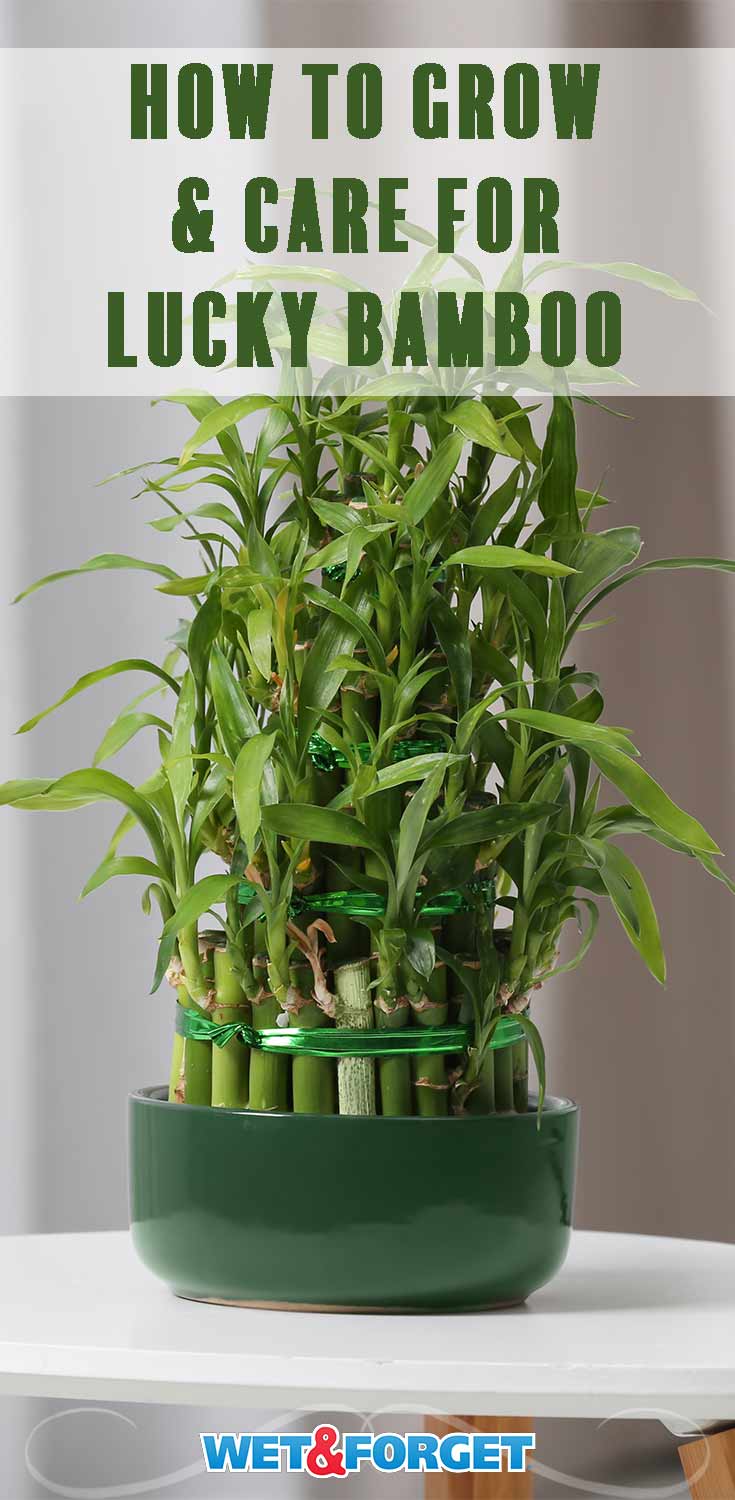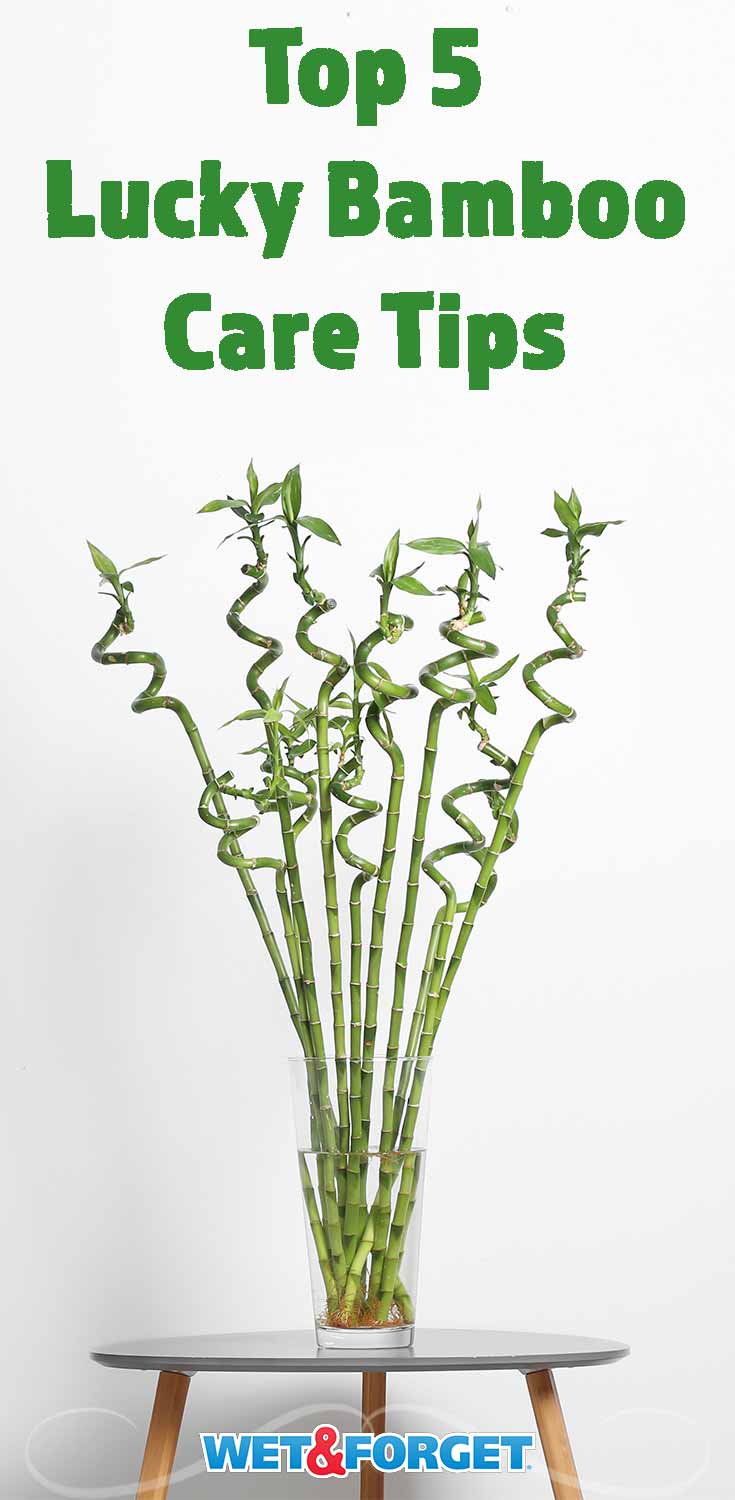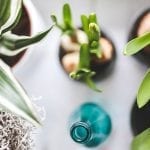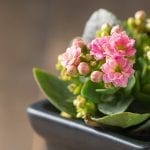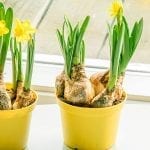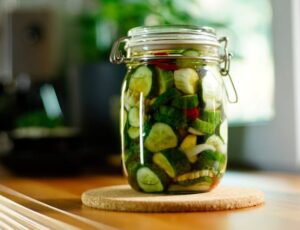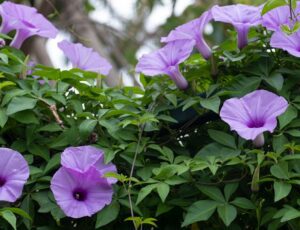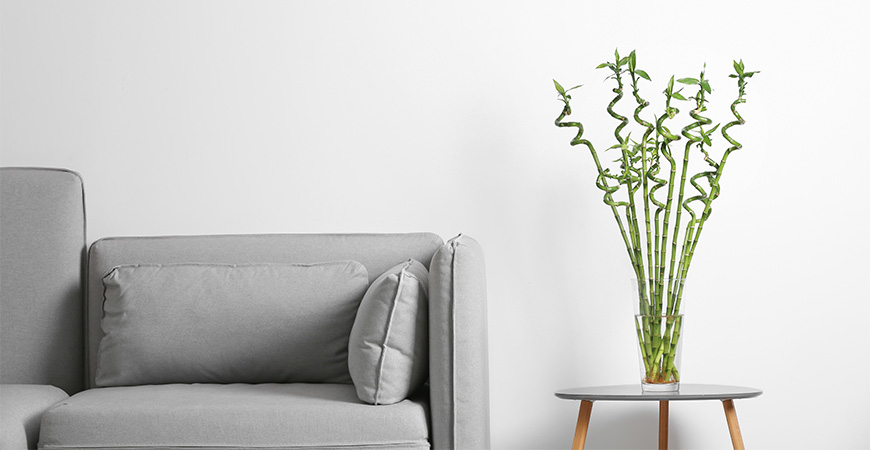
Top Lucky Bamboo Care Tips & Tricks
Lucky bamboo is an indoor houseplant that brings an exotic, “Far East” feel to your home. This hardy plant can tolerate many growing conditions, easily thriving in water or potting soil. Here we’ll cover how to care for lucky bamboo.
What is Lucky Bamboo?
Lucky bamboo resembles bamboo, but it is a member of the dracaena family (dracaena sanderiana). Sometimes called ribbon dracaena, ribbon plant, Chinese water bamboo, or friendship bamboo, this exotic-looking plant with its round stems and bright green foliage is native to West Africa.
It is thought to bring good luck and prosperity to its owner – especially if the plant was received as a gift. This indoor plant is also a popular element of feng shui.
In what type of container should I plant lucky bamboo?
Water – lucky bamboo can be grown in a simple vase filled with a few decorative pebbles and water. It’s important to note that they are sensitive to the chemicals present in tap water.
So, it’s best to water your lucky bamboo plant with distilled water, bottled water, or tap water that has sat out for 24 hours. Moreover, this gives the chlorine time to evaporate.
Then, add enough water to the container to cover the roots, adding a little water every other day or so.
For lucky bamboo growing in water, change the water weekly. Remove the plant from the container every four weeks and thoroughly rinse the roots. Then, place it back in the container with fresh water.
Potting Soil – Lucky bamboo can also be grown in rich, porous potting soil. Keep the soil moist, not wet. Good soil drainage is essential for the plant to thrive. Add humidity by misting your plant two the three times a week.
How Should I Care for My Lucky Bamboo Plant?
Fertilizer – Fertilizing lucky bamboo is optional as it can grow for years with nothing more than clean water. But, if you choose to fertilize, feed lucky bamboo once or twice a year with a diluted liquid plant fertilizer. A single drop added to the container is usually sufficient.
Specialty fertilizers are also available.
If the plant’s stems turn yellow near the bottom, this may be a sign of too much fertilizer. Remedy the problem by changing out the water and stopping fertilization.
The plant should recover in a month or so. If you have multiple stems in a container with one that has turned yellow, remove the yellow stalk and change out the water.
If you see a brown or mushy-looking stem, then this may be a sign of root rot. Root rot is caused by too much fertilizer, or it may be caused by too much water in the container (plants growing in potting soil). Revive the plant by cutting the healthy, green tops and rooting new plants.
How much light does a lucky bamboo plant need?
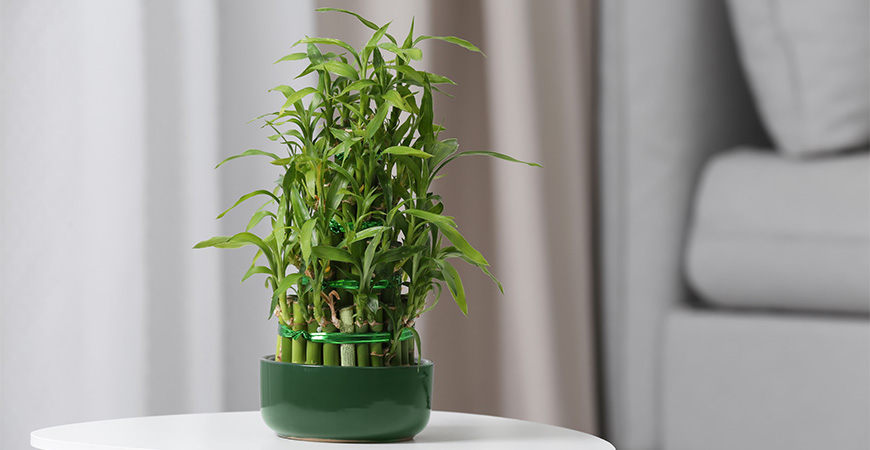
Lucky bamboo loves bright, indirect light. An ideal spot is to set your plant on a surface adjacent to a sunny window.
Too much light – A lucky bamboo in direct sunlight may become sunburned. You’ll know that it has received too much sun if it begins to turn yellow.
Too little light– If the plant receives too little sun, it might produce light green or yellow leaves. After adjusting the amount of light, the light green foliage should brighten up; any yellowed leaves will die to be replaced with new, healthy foliage. Also, insufficient sunlight can cause slow plant growth.
Your plant needs to “breathe,” so it’s a good idea to dust the foliage occasionally. Mist the plant and use a small craft paintbrush or a damp cloth to wipe the foliage gently.
Is lucky bamboo prone to any diseases or pests?
Like most indoor tropical plants, lucky bamboo is susceptible to spider mites and scale. If you notice sticky, cotton-like, or snail-like growth on plant stems, this may signify insects. To remedy the problem:
- To prevent spider mites, add a drop of liquid dishwashing soap to a bowl of distilled water. Wipe the leaves and stems with soapy water and a soft sponge. Also, clean the plant container in soapy water. If tiny webs appear, wipe them from the plant with a dampened cotton swab.
- Pick off any insects you can see by hand.
- Periodically inspect your bamboo for signs of thrips and mealybugs as well.
Indoor Temperatures – This plant thrives in normal indoor temperatures, between 65°F and 90°F. So, keep plants away from AC or heating vents and drafty windows or doors.
Important Note: The leaves are mildly toxic. So, place the plant out of reach of children or pets.
How do I trim a lucky bamboo plant?
Trimming is an important part of keeping your plant healthy. Over time, the plant may become tall and lanky or top-heavy. Or, a shaped plant may begin to lose its form.
Trim offshoots back within an inch of the main stem with clean pruning shears. New shoots will sprout, and the plant will be more compact.
Prune stems to just above a raised ring on the stalk. This will encourage new growth.
It’s usually not a good idea to cut the main stalk, but if you must trim it, new growth will appear just below the cut. The remaining trimmings, if healthy, can be placed in water to propagate new plants. Inhibit new top growth by dipping the cut end of the stalk in paraffin wax.
Lucky Bamboo and Good Feng Shui
Deciding where to place your lucky bamboo plant depends on what you wish to attract. Here are a few tips and how-tos:
- Place your plant in the southeast corner of your home to attract wealth and luck.
- To activate health and luck, place your plant in an east-facing room.
- Set your greenery on the coffee table to prevent an accumulation of chi energy.
- A bamboo plant on the dining room table promotes abundance. A feng shui dining room layout will also have a wall mirror reflecting the table, which is thought to double abundance.
- A six-stalk arrangement is thought to bring prosperity and wealth when placed in the southeast corner of an office.
Did you know? Giving a lucky bamboo plant as a gift is thought to bring the receiver good luck. Choose an attractive woven lattice design or a bundled arrangement tied with a red ribbon.


